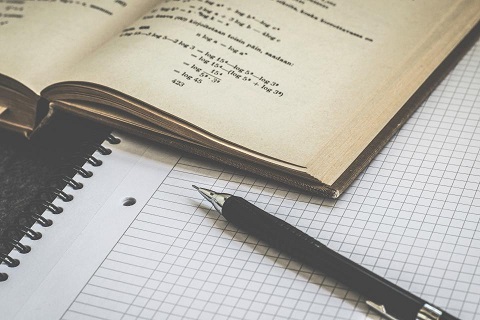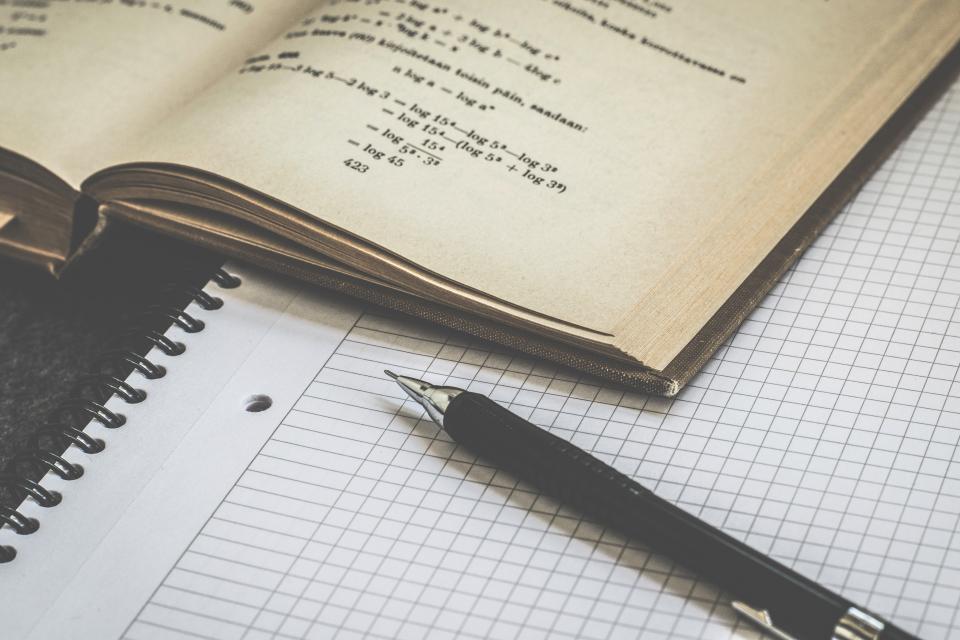非常感谢大家聚集在这里共同探讨with用法总结的话题。这个问题集合涵盖了with用法总结的广泛内容,我将用我的知识和经验为大家提供全面而深入的回答。

with的用法是怎样的?
1、with表示状态时,还可作“跟上…”“听懂…的话”解,一般用于疑问句或否定句中。
2、with表示关系时还可作“与…合并〔混合,组合〕”解。
3、with表示伴随状态时,作“以与…同样的方向〔程度,比率〕”解。可接“名词+动词不定式”“名词+现在分词”“名词+过去分词”。
4、with表示比较时作“同…相比”“与…平行”解。
5、with可以用来表示虚拟语气,意思是“如果,假如”。用于诗歌或民谣的副歌、叠句中, with常无实际含义。
6、在with的前面加away,down等词时,可作为不用动词的命令格式。
7、with后的宾语后所接的形容词,过去分词或名词都可作表语。
扩展资料
与近义词by的比较
一、使用途径
1、使用by时,多半是指通过某一种行为去得到结果。
2、with则是通过使用某种工具或者物体去得到结果。?
二、有相同的反义词
一般来说,without可以同时被用作是by和with的反义词,去表达相反的意思。
三、连用
by还可以与交通工具连用,如by bus,by train。在被动句中,by常用于介绍“产生行为的人或物”。
with的用法请问一下with的用法有哪些
with的用法如下:
1、表示使用工具、手段等,意为“用……”。例如:We can walk with our legs and feet。我们用腿脚行走。
2、表示伴随,意为“和……在一起”。例如:Can you go to a movie with me?你能和我一起去看**吗?
3、表示一种关系或适应范围,意为“关于、对于”。例如:What’s wrong with your watch?你的手表怎么了?
4、表示人或物的特征,意为“带有”、“具有”。例如:They have no money with them。他们没带钱。
5、表示工具、手段,意为“以……”、“用……”。例如:We listen with our ears。我们用耳朵听。
关键词解释
with 英[w?]美[w?]
prep. 和…在一起;和;同;跟;有;具有;带有;用;使用;以;借;
[例句]She is a doctor?with?a strong sense of?vocation。
她是一位具有强烈使命感的医生。
介词with用法最全总结表格
介词with用法最全总结:
1、表示方式、手段或工具等时(=以,用),注意不要受汉语意思的影响而用错搭配,如“用英语”习惯上用in English,而不是with English。
2、与某些抽象名词连用时,其作用相当于一个副词。
3、表示条件时,根据情况可与虚拟语气连用。
1、比较with和as:两者均可表示“随着”,但前者是介词,后接名词或代词;后者是连词,用于
引导一个句子。
2、with的复合结构“with+宾语+宾语补足语”是一个很有用的'结构,它在句中主要用作状语,
表示伴随、原因、时间、条件、方式等;其中的宾语补足语可以是名词、形容词、副词、现在分词、过去分词、不定式、介词短语等。
with的其他用法
(1)with+宾语+形容词
often sleeps with the windows open.他常开着窗睡觉。
Don't speak with your mouth full.不要满嘴巴食物说话,
(2) with+宾语+副词
He stood before his teacher with his head down.他低着头站在老师面前。
He was lying on the bed with all his clothes on.他和衣躺在床上,
(3)with+宾语+介词短语
She said good-bye with tears in her eyes.她含着眼泪说了声再见,
The man was asleep with his head on his arms.这个人头枕着胳膊睡着了.
(4)with+宾语+现在分词
He fell asleep with the lamp burning.他没熄灯就睡着了,
I won't be able to go on holiday with my mother being ill.因为妈妈有病,我无法去度假。
(5)with+宾语+过去分词
He sat there with his eyes closed. 他闭目坐在那儿,
All the afternoon he worked with the door locked.整个下午他都锁着门在房里工作。
(6) with+宾语+动词不定式
I can't go out with all these clothes to wash.要洗这些衣服,我无法出去了。
With such good cadres to carry out the Party’s policy we feel safe.有这样的的政策,我们感到放心。
(7)with+宾语+名词
He died with his daughter yet a schoolgirl.他去世时,女儿还是个小学生。
with用法
with作介词的意思有用……、随着、支持、和……在一起等。
1.与……(在)一起,带着
Come with me. 跟我一起来吧。
I went on holiday with my friend. 我跟我朋友一起去度假。
Do you want to walk home with me? 你愿意和我一道走回家吗
2.(表带有或拥有)有……的,持有,随身带着
China is a very large country with a long history. 中国是一个具有历史悠久的大国。
3.(表方式、手段或工具)以,用
He caught the ball with his left hand. 他用左手接球。
She wrote the letter with a pencil. 她用铅笔写那封信。
4.(表材料或内容)以,用
Fill the glass with wine. 把杯子装满酒。
The road is paved with stones. 这条路用石头铺砌。
5.(表状态)在……的情况下,……地
He can read French with ease. 他能轻易地读法文。
I finished my homework though with difficulty. 虽然有困难,我还是做完了功课。
6.(表让步)尽管,虽然
With all his money, he is unhappy. 尽管他有钱,他并不快乐。
With all his efforts, he lost the match. 虽然尽了全力,他还是输了那场比赛。
7.(表条件)若是,如果
With your permission, I’ll go. 如果你同意我就去。
“with”的复合结构“with+宾语+宾语补足语”:
它在句中主要用作状语,表示伴随、原因、时间、条件、方式等;其中的宾语补足语可以是名词、形容词、副词、现在分词、过去分词、不定式、介词短语等。如:
(1) with+宾语+形容词
He often sleeps with the windows open.?他常开着窗睡觉。
Don’t speak with your mouth full.?不要满嘴巴食物说话。
(2) with+宾语+?副词
He stood before his teacher with his head down.?他低着头站在老师面前。
He was lying on the bed with all his clothes on.?他和衣躺在床上。
(3) with +宾语+?介词短语
She said good-bye with tears in her eyes.?她含着眼泪说了声再见。
The man was asleep with his head on his arms.?这个人头枕着胳膊睡着了。
(4) with+宾语+现在分词
He fell asleep with the lamp burning.?他没熄灯就睡着了。
I won’t be able to go on holiday with my mother being ill.?因为妈妈有病,?我无法去度假。
高一英语 关于with的用法
with用法小结
一、with表拥有某物
Mary married a man with a lot of money . 马莉嫁给了一个有着很多钱的男人。
I often dream of a big house with a nice garden . 我经常梦想有一个带花园的大房子。
The old man lived with a little dog on the lonely island . 这个老人和一条小狗住在荒岛上。
二、with表用某种工具或手段
I cut the apple with a sharp knife . 我用一把锋利的刀削平果。
Tom drew the picture with a pencil . 汤母用铅笔画画。
三、with表人与人之间的协同关系
make friends with sb talk with sb quarrel with sb struggle with sb fight with sb play with sb work with sb cooperate with sb
I have been friends with Tom for ten years since we worked with each other, and I have never quarreled with him .
自从我们一起工作以来,我和汤姆已经是十年的朋友了,我们从没有吵过架。
四、with 表原因或理由
John was in bed with high fever . 约翰因发烧卧床。 He jumped up with joy . 他因高兴跳起来。
Father is often excited with wine . 父亲常因白酒变的兴奋。
五、with 表“带来”,或“带有,具有”,在…身上,在…身边之意
The girl with golden hair looks beautiful . 那个金头发的女孩看起来漂亮。
The famous director will come to the meeting with the leading actor and actress.
那个有名的导演将带着男女主角来到会场。 A storm with a hurricane has come onto its way . 带有飓风的风暴要来了。 Do you have money with you . 身上带着钱吗?
Take the umbrella with you in case it rains . 随身带伞,以防下雨。
六、with表想法,信念,态度与…一致
I agree with you on how to deal with it . 关于此事如何处理,我同意你的看法。
I believe with the headmaster that a good teacher should not only teach a student what to learn but also how to learn it .
我相信校长所说,一个好老师不但教学生学什么,而且应教学生怎么去学。
七、with表示让步,“虽有,尽管”
With all his money and fame, he is not happy . 有着钱和名誉,他还是不快乐。
With good teachers and warmhearted classmates ,the new comer feels lonely . 虽有着好老师和热心的同学,这个新来的还是感觉孤独。
八、with表同时,或同一方向,“随着”
The temperature of cold-blooded animals change with the temperature of the surroundings . 冷血动物的体温随着周围的环境的改变而变化。 The big ship is sailing with the wind . 这个大船正随风向航行。
And with the last words , she turned away. 随着最后一句话说完,他转身离开了。
九、with的复合结构表行为方式或伴随情况
1、 with + n/pron + adj.
He left the room with the door open . 门开着,他就离开了屋子。 Don’t talk with your mouse full . 嘴里满是东西时不要说话。
2、with + n/pron + adv.
With the radio on ,grandma slept deeply in the chair . 收音机开者,奶奶在椅子里沉沉的睡着。 With Tom away , I always feel lonely . 汤母不在,我一直感觉孤独。
3、with + n/pron + done
The fellow stood there with his hands crossed . 这个家伙两手交叉,站在那里。
The peasants have a good harvest with all the crops got in . 庄稼都收割了,农民们有了一个好收成。
4、with + n/pron + to do
With this book to help you , you can finish your work as soon as possible . 有这本书来帮忙,你能尽快完成工作。
With so many problems to settle ,the new manager was too worried to eat anything . 有着太多问题要去处理,新经理担忧的吃不下任何东西。
5、with + n/pron + n
The old man looks down upon everyone ,with his son chairman of the company . 因为他儿子是公司的主席,这个老头瞧不起任何人。
He was taken to hospital with his legs a mass of bleeding flesh . 他被抬到医院,他的腿血肉模糊。
6、with + n/pron + 介词短语
The man left the meeting with a book in his hand . 这个男人手里拿着书离开了会议。
The woman with a diamond necklace around the neck must be wealthy . 那个脖子上带项链的女人一定很有钱。
十、with其他用法主要出现在一些常用词和习语中,记住其特定含义即可。
It is a long time not to get in touch with Tom. 很长时间没有和汤母取得联系了。 Down with imperialism. 打倒帝国主义。
with表伴随6种用法
with表伴随6种用法如下:
1、表示方式、手段或工具等时(=以,用),如:with?a car用卡车。
2、与某些抽象名词连用时,其作用相当于一个副词。
3、表示条件时,根据情况可与虚拟语气连用。
4、比较with和as:两者均可表示“随着”,但前者是介词,后接名词或代词;后者是连词,用于引导一个句子。
with
5、复合结构“with+宾语+宾语补足语”是一个很有用的结构,它在句中主要用作状语,表示伴随、原因、时间、条件、方式等;其中的宾语补足语可以是名词、形容词、副词、现在分词、过去分词、不定式、介词短语等。
6、with+宾语+形容词;with+宾语+副词;with+宾语+介词短语;with+宾语+现在分词;with+宾语+过去分词;with+宾语+动词不定式;with+宾语+名词。
with的其他解释及用法:
表示:和…在一起;和;同;跟;有;具有;带有;用;使用;以;借。
with的其他用法
with的用法1:with表示状态时,还可作“跟上…”“听懂…的话”解,一般用于疑问句或否定句中。
with的用法2:with表示关系时还可作“与…合并(混合,组合)”。
with的用法3:with表示比较时作“同…相比”“与…平行”。
with的用法4:with可以用来表示虚拟语气,意思是“如果,假如”。用于诗歌或民谣的副歌、叠句中,with常无实际含意。
英语with的用法归纳
表示方式、手段或工具等时(=以,用),注意不要受汉语意思的影响而用错搭配,如“用英语”习惯上用in English,而不是with English。
扩展资料 与某些抽象名词连用时,其作用相当于一个副词。如:
with care=carefully 认真地
with kindness=kindly 亲切地
with joy=joyfully 高兴地
with anger=angrily 生气地
with sorrow=sorrowfully 悲伤地
with ease=easily 容易地
with delight=delightedly 高兴地
with great fluency =very fluently 很流利地
表示条件时,根据情况可与虚拟语气连用。如:
With more money I would be able to buy it. 要是钱多一点,我就买得起了。
With better equipment, we could have finished the job even sooner. 要是设备好些,我们完成这项工作还要快些。
比较with和as:两者均可表示“随着”,但前者是介词,后接名词或代词;后者是连词,用于引导一个句子。比较:
He will improve as he grows older. 随着年龄的增长,他会进步的。
People’s ideas change with the change of the times. 时代变了,人们的观念也会变化。

今天的讨论已经涵盖了“with用法总结”的各个方面。我希望您能够从中获得所需的信息,并利用这些知识在将来的学习和生活中取得更好的成果。如果您有任何问题或需要进一步的讨论,请随时告诉我。





